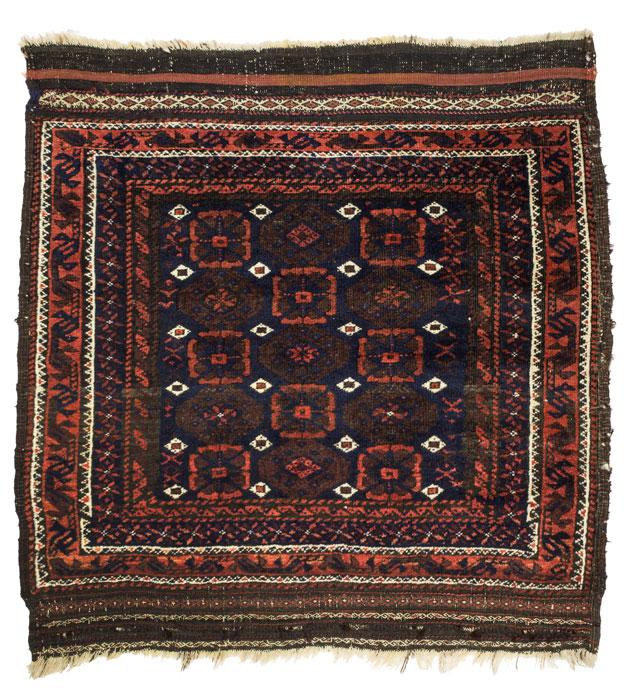
Culture: Baluch
Title: Bag (khorjin) face
Date Made: 19th century
Type: Textile
Materials: Wool warp, weft, and pile; asymmetrical knot
Place Made: Asia; Baluchistan (Iran, Pakistan, or Afghanistan)
Measurements: Overall: 33 in x 31 1/2 in; 83.8 cm x 80 cm
Credit Line: Bequest of Eileen Paradis Barber
Accession Number: 1997.14.145.1
Collection: Mount Holyoke College Art Museum
This textile is the front part of a khorjin (bag). It was woven for a purely utilitarian purpose – it was designed to help the owner carry objects. It is believed to have been woven in the 19th century in Balochistan, an arid desert and mountainous region that stretches across southeastern Iran, southwestern Pakistan, and southwestern Afghanistan. It was given to the Mount Holyoke College Art Museum in 1997, as a bequest of Eileen Paradis Barber (Mount Holyoke Class of 1997) after her death the year prior. In 1936, Mount Holyoke alumna Eileen Paradis married Joseph Barber Jr., an editor at The Atlantic Monthly. The Barbers amassed a large collection of silver and modern art. A search query for “Eileen Paradis Barber” in the Collections Database yields 265 records, including art by Käthe Kollwitz, Paul Cooper, and Albrecht Dürer. This khorjin is one of two textiles in the entirety of Eileen Paradis Barber’s contributions to the museum’s collection, the other a 19th-century American embroidery sampler. Therefore, these textiles are exceptional in the sense that they do not fit the Barbers’ pattern of collecting. One can only speculate how the khorjin came into the Barbers’ possession, but it likely passed through an art auction in the 20th century. In fact, a similar bag can be found on an online auction, which suggests that although the medium has changed, this manner of acquiring, selling, and collecting Middle Eastern products persists in the present day.
Collections Database: MH 1997.14.145.1